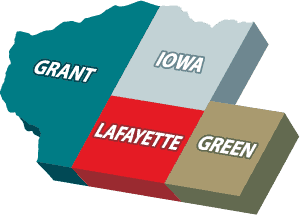Tips for Healthy Eating
Here are some recommendations for healthy eating:
- Eat a variety of fruits and vegetables.
Eating fruits and vegetables of different colors gives your body a wide range of valuable nutrients, including fiber, folate, potassium, and vitamins A and C. Some examples are green spinach, orange sweet potatoes, black beans, yellow corn, purple plums, blueberries, red watermelon, and white onions. Have them with meals or for a snack. Leave skins on your fruits and vegetables, if possible. For example, eat the skin when you have a baked potato, and snack on unpeeled apples, pears, and peaches. Don’t forget to rinse fruits and vegetables before eating.
- Eat a diet rich in foods that contain fiber such as dry beans, fruits, vegetables, and whole-grain foods.
Breakfast is a good time to enjoy foods with fiber. For example, try unsweetened, whole wheat or bran cereals, and add fruit such as berries and bananas.
- Season your foods with lemon juice, herbs, or spices, instead of butter and salt.
- Look for foods that are low in cholesterol and fat, especially saturated fat (mostly in foods that come from animals) and trans fats (found in many cakes, cookies, crackers, icings, margarines, and microwave popcorn). Saturated fats and trans fats can increase blood cholesterol levels.
- Choose and prepare foods with little salt.
- Choose lean cuts of meat and poultry.
Trim away extra fat and remove the skin from chicken and turkey before cooking. Broil, roast, bake, steam, microwave, or boil foods instead of frying.
- Reaching and maintaining a healthy weight are important for your overall health and well-being.
The secret is to balance your “energy in” and “energy out” over the long run. “Energy in” is the calories from foods and beverages you have each day, and “energy out” is the calories you burn for basic body functions and during physical activity. Your weight will stay the same when the calories you eat and drink equal the calories you burn. On the other hand, you will gain weight when when the calories you eat and drink are greater than those you burn. Physical activity can help you reach and keep a healthier weight.
- Watch your portion size.
Controlling portion size helps limit calorie intake, especially when eating foods that are high in calories.
Drinking Enough Fluids
It’s important to drink enough liquids to keep your body working properly. This is particularly true for older adults because they often don’t feel thirsty even if their bodies need fluids. Drinking enough fluids every day is essential for those who exercise regularly, eat large amounts of protein, use laxatives, or live in areas with high temperatures. Check with your doctor, however, if you’ve been told to limit how much you drink.
Drink plenty of liquids such as water and other drinks without added sugar. Fat-free or low-fat milk, 100% juice, coffee, and tea also are good sources of fluids, as are foods with high moisture content such as fruits, vegetables, and low-sodium broth-based soups. Those who choose to drink alcoholic beverages should do so sensibly and in moderation, which means up to one drink per day for women and up to two drink per day for men.
Eating Out
Eating out is enjoyable, but restaurants often serve large meals, which can be high in calories, fat, and salt. Here are a few tips to help make your meal both delicious and nutritious:
- Order foods such as salads with lean meats, low-fat or fat-free cheeses, and other toppings. Choose low-fat or fat-free salad dressing, and ask for the dressing on the side to control how much you use.
- Choose foods that are baked, broiled, braised, grilled, steamed, sauteed, or broiled instead of fried. With these cooking methods, little or no fat is added to the food.
Source: Your Everyday Guide from the National Institute on Agiing at NIH

